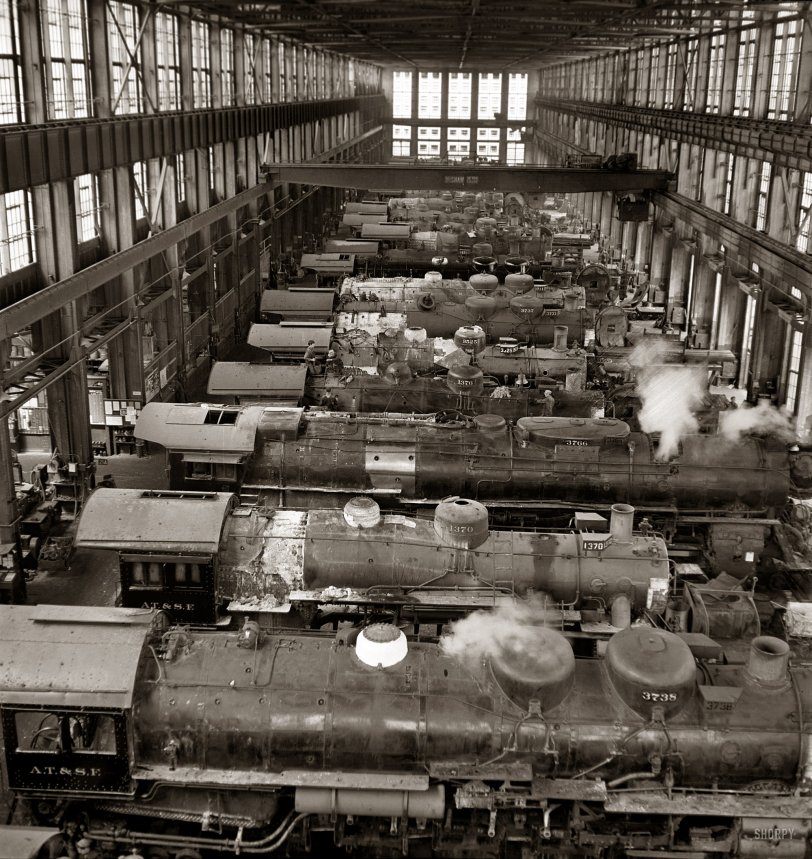


Framed or unframed, desk size to sofa size, printed by us in Arizona and Alabama since 2007. Explore now.
Shorpy is funded by you. Patreon contributors get an ad-free experience.
Learn more.

- Baldwin 62303
- Baldwin VO-1000
- Cold
- No expense spared
- Tough Guys
- Lost in Toyland
- And without gloves
- If I were a blindfolded time traveler
- Smoke Consumer Also Cooks
- Oh that stove!
- Possibly still there?
- What?!?
- $100 Reward
- Freeze Frame
- Texas Flyer wanted
- Just a Year Too Soon
- WWII -- Replacing men with women at the railroad crossing.
- Yes, Icing
- You kids drive me nuts!
- NOT An Easy Job
- I wonder
- Just add window boxes
- Icing Platform?
- Indiana Harbor Belt abides
- Freezing haze
- Corrections (for those who care)
- C&NW at Nelson
- Fallen Flags
- A dangerous job made worse
- Water Stop
Print Emporium
American Garage: 1943

March 1943. "San Bernardino, California. A general view in the Atchison, Topeka, and Santa Fe Railroad locomotive shops." Medium-format nitrate negative by Jack Delano for the Farm Security Administration. View full size.
Moving Mountains
In this view there are several "classes" of locomotives. Usually the first two numbers designate the class. For example, nos 3738, 3766, 3737 and 3711 are all of one design, although using two different fuels. This explains it a bit:
The AT&SF bought two 4-8-2 "Mountains" from the Baldwin Locomotive Works in 1918. One of them, road number 3700, was a coal burner and the other, road number 3701, burned oil. Before these two were delivered, another ten were ordered: five coal burners and five oil burners (road numbers 3702 through 3711). Between 1919 and 1924, the AT&SF would purchase another 39 "Mountains" (road numbers 3712 through 3750). Twenty of them were oil burners and nineteen were coal burners.
Similarly no 1376 and 3525 were both 4-6-2 "Pacific" types but of 2 different designs.
Warning - Asbestos
Put on your protective gear now.
Mesothelioma waiting to happen
See the locomotive 2nd up from bottom with a section of its steel plating removed --- that white stuff is asbestos -- I feel bad for the workers who worked on these as well as ships, itc. My father-in-law died from this disease.
Old Berdoo Shops
I "toured" this building after it closed. It still looked pretty much like this, minus the locomotives.
A dozen locos or more
In this picture you see a dozen or more locomotives. Every one looks different from the other. Railroads would buy just a few locos at a time back then, each batch with a different design, different specs, different parts.
Replacement parts often had to be fabricated individually.
Compare that to the assembly line sameness of diesels. The economy of maintenance alone was a strong argument for putting these magnificent machines out to pasture.
Steam locos actually could be slightly more energy efficient than the diesels, and many were more powerful, too, but less economical.
























On Shorpy:
Today’s Top 5